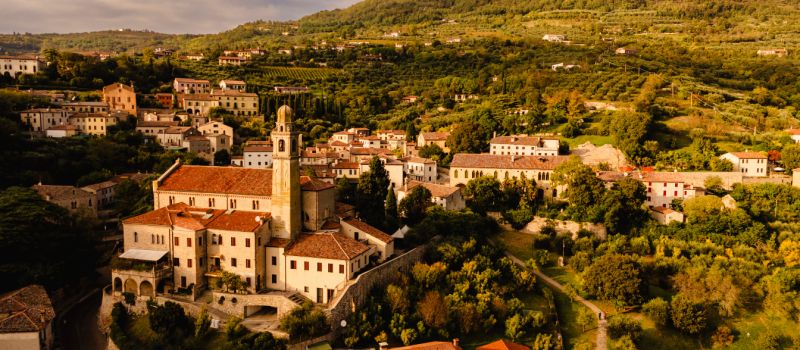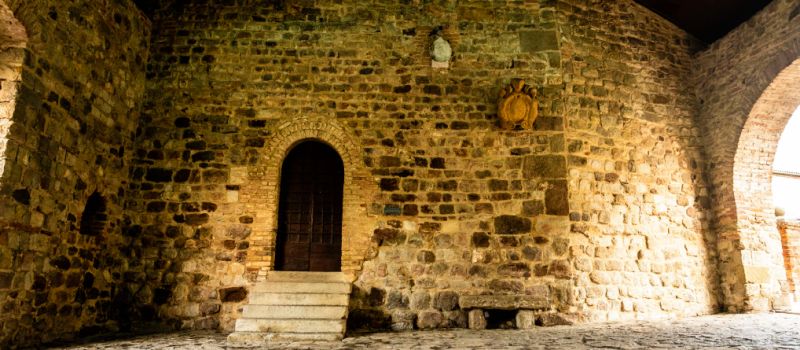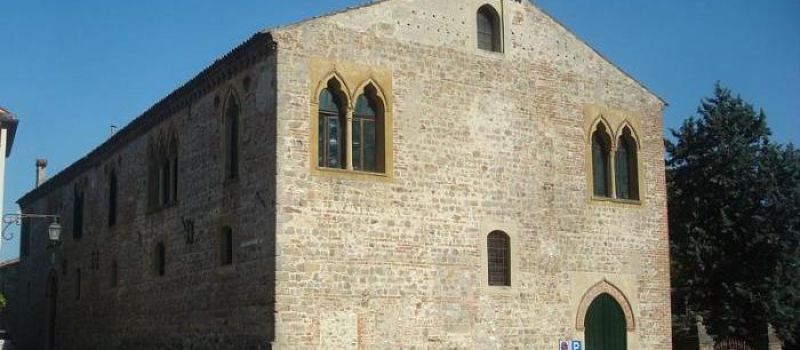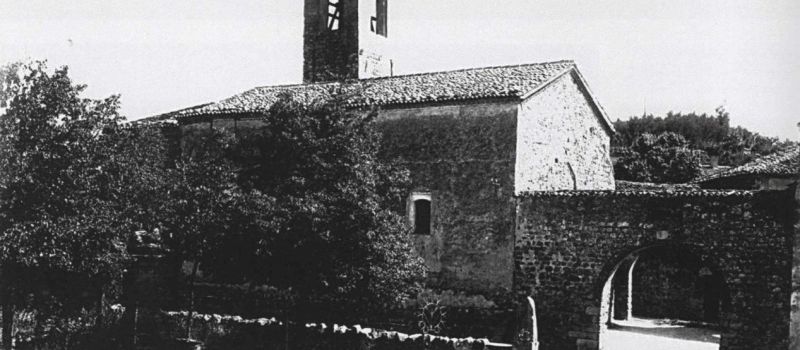HISTORICAL NOTES
From Prehistory to the Unification of Italy
The origins of Arquà Petrarca
The name "Arquà" derives from the Latin Arquata (later Arquada, in vernacular), and from the expression Arquata Montium ("ring of mountains") which stands for its location on the slopes of two hills.
The history of human settlement in this area begins in the Bronze Age and continues uninterruptedly to the present day.

Prehistory and Ancient History
The settlement was abandoned in the Middle Bronze Age (15th-16th centuries), probably as a result of climatic changes.
The territory of Arquà, was then inhabited by the Ancient Venetians, who settled on the slopes of the hills.
Following the Romanization of the Euganean area, Arquà became part of the Tenth Region under the rule of Emperor Augustus. Even today, several elements bear witness to the Roman presence in this area: place names such as Bignago (from Bennius) and Mercurana (from Mercurius) preserve the memory, as do the numerous archaeological finds, including funerary cippus, imperial coins, and ancient water drainage pipes.

The Medieval Era
In 985, a document attests to the presence in Arquà of a castle inhabited by Rodolfo Normanno. This small fortress stood on a rise now called Monte Castello, in memory of the ancient fortifications that have disappeared, and it was here that the first medieval nucleus developed, from which later arose the village that would be home to Francesco Petrarca.
At the foot and along the slopes of the hill also arose religious buildings: a church dedicated to St. Mary, mentioned in 1026 with the title of pieve, and the Oratory of the Holy Trinity, mentioned in 1181, both equipped with a baptismal font. In the Duecento, Arquà became a fief of the Marchesi d'Este, and then came under the political control of Padua. With the Lordship of the Carraresi, the village was elevated to a vicariate, and it was during this period that Petrarch settled there, finding his last home here.

The rule of the Serenissima
From 1405, with the rule of the Serenissima, Arquà maintained its administrative role over a vast territory, which included localities such as Galzignano, Montegrotto, Abano and Valbona. During this period, the poet's growing fame attracted noble families from Padua and Venice, including the Contarini, Pisani, Capodivacca and Zabarella families, who built elegant mansions there, defining the urban layout that the village still retains today.
After the XVI century, there was no further building expansion, and with the fall of the Republic of Venice, Arquà gradually lost importance.

Risorgimento and annexation to the Kingdom of Italy
In 1866, with the annexation of the Veneto region to the Regno d'Italia, the village was granted the title of municipality and, from 1868, could officially add to its name that ofPetrarch, forever sanctioning the link with the famous poet.


